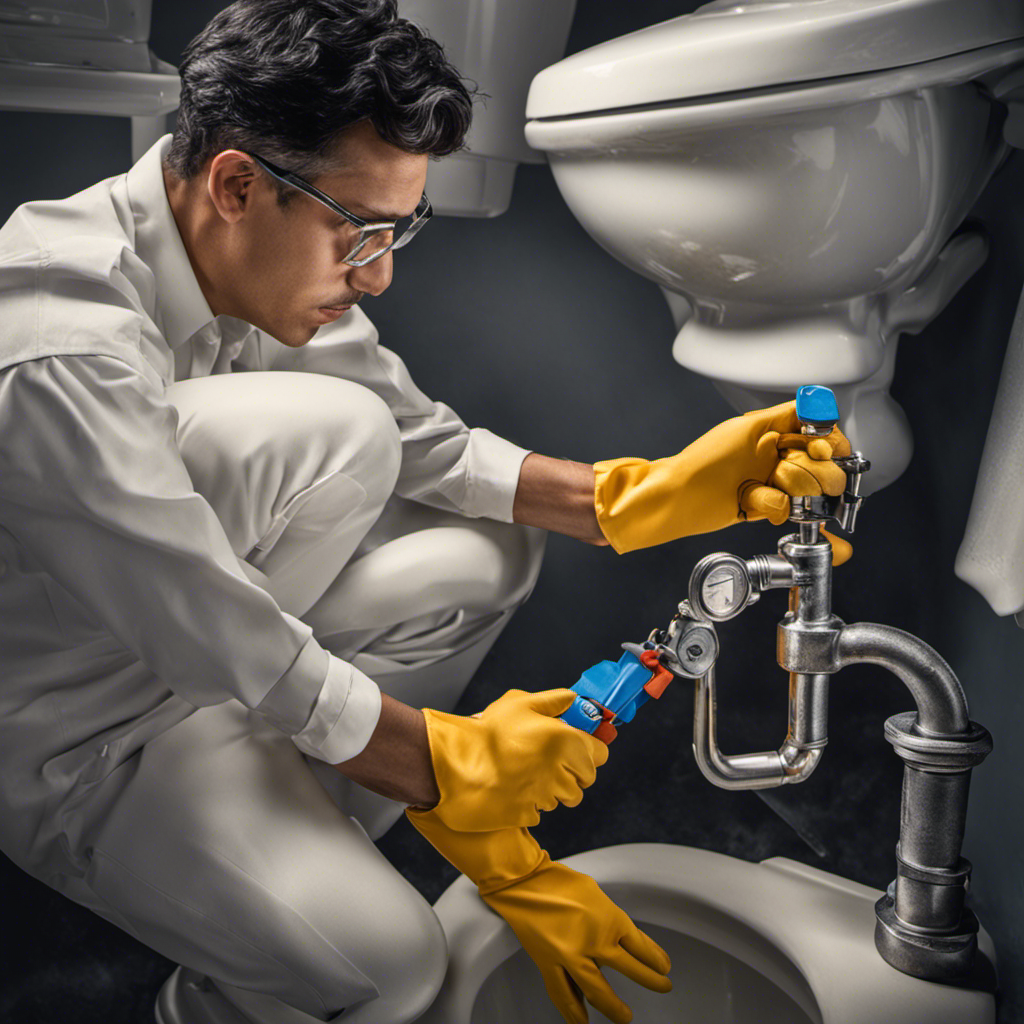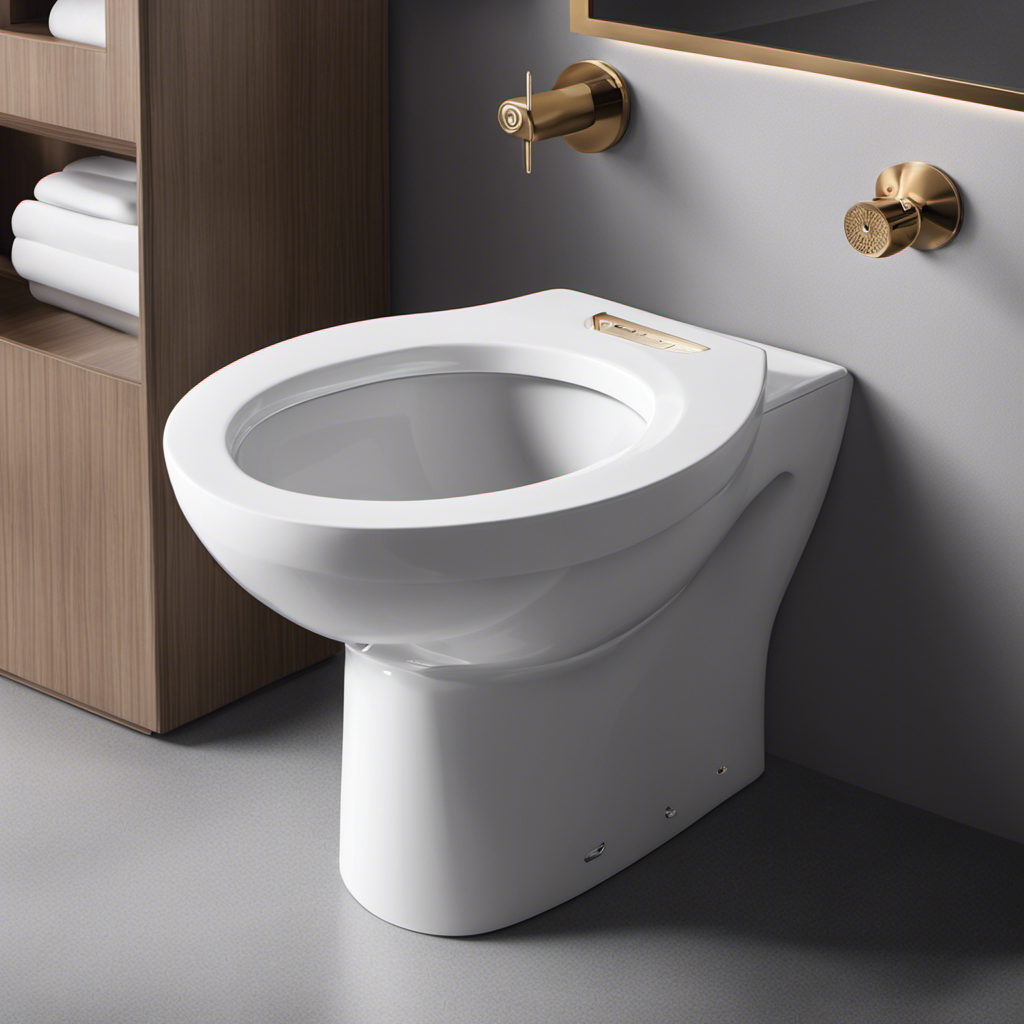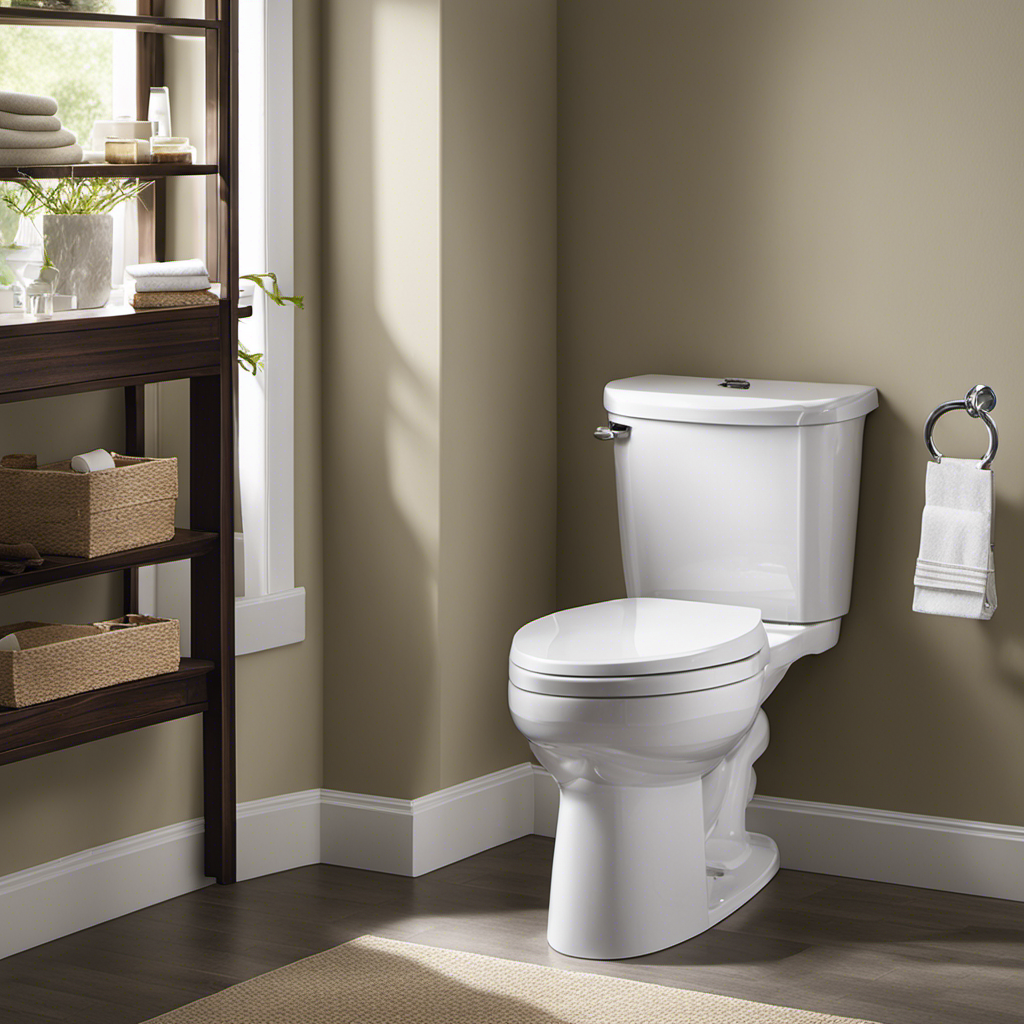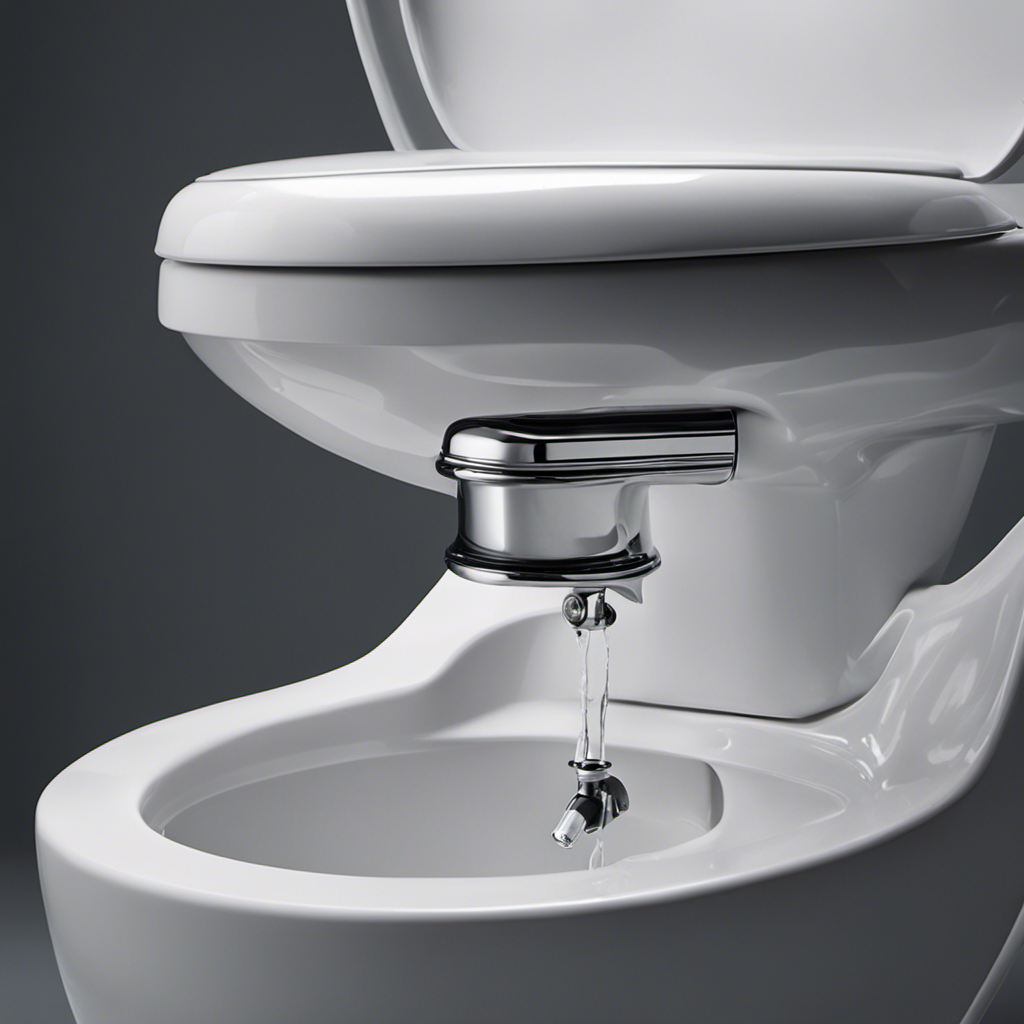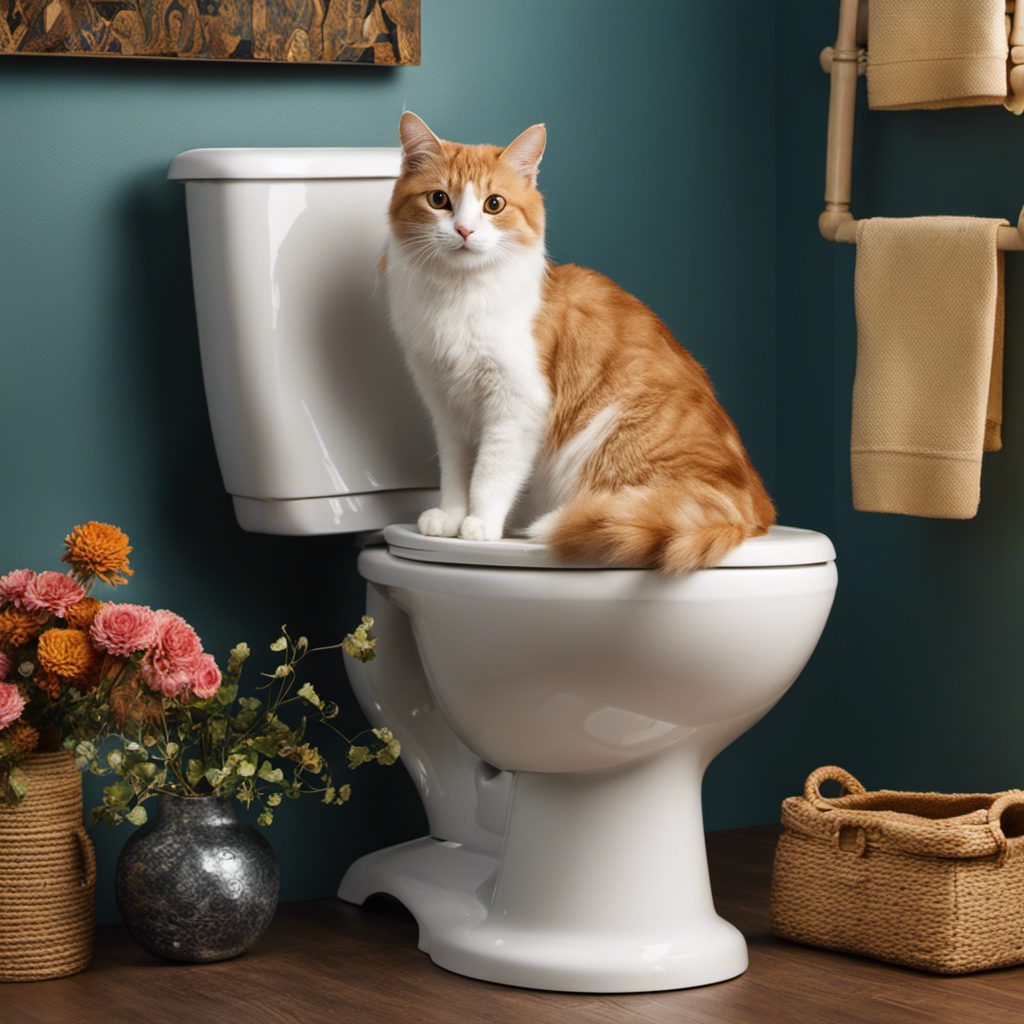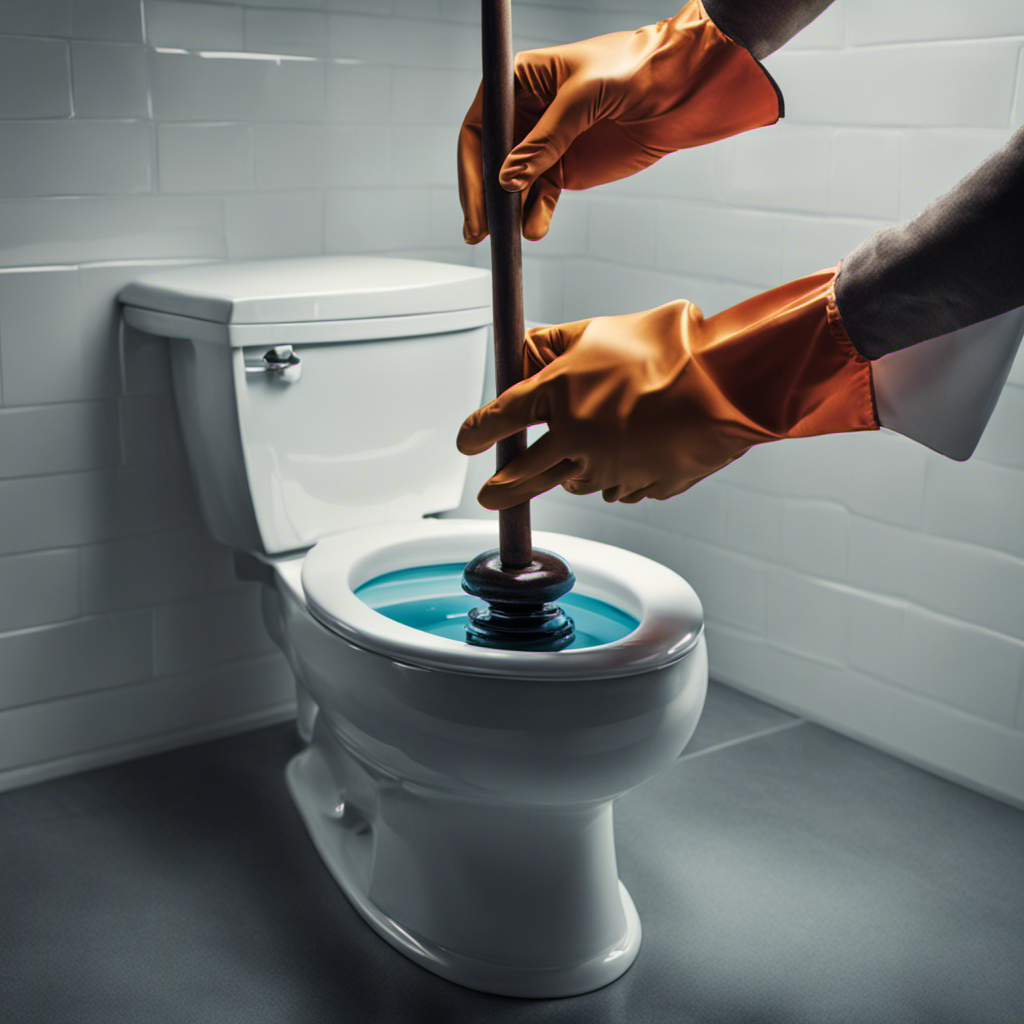I know the frustration of a running toilet. It’s like a constant reminder of a problem that needs fixing. But don’t worry, I’ve got you covered.
In this article, I’ll walk you through the step-by-step process of how to fix your running toilet. From identifying the issue to cleaning or replacing the fill valve, I’ll provide you with the technical know-how to get your toilet working smoothly again.
So let’s dive in and put an end to that annoying running sound once and for all.
Key Takeaways
- Check the flapper for wear or damage and replace it if necessary
- Turn off the water supply by locating and turning the shut-off valve near the base of the toilet
- Inspect and adjust the float to ensure it is properly positioned and adjust the water level as needed
- Clean or replace the fill valve by turning off the water supply, disconnecting the water supply line, removing the old fill valve, and installing a new one.
Identifying the Issue
You’ll want to start by checking if the flapper in your toilet tank is causing the issue. This is a common problem that can lead to a running toilet.
To troubleshoot, first, remove the lid of the toilet tank. Look for a rubber flapper that covers the flush valve opening at the bottom of the tank. Inspect the flapper for any signs of wear or damage. If it appears worn out or doesn’t create a tight seal, it may be the culprit behind the running toilet.
In that case, you’ll need to replace the flapper. Turn off the water supply to the toilet, flush to drain the tank, and remove the old flapper. Install a new flapper, ensuring it fits properly and creates a tight seal.
Shutting off the Water Supply
When it comes to fixing a running toilet, one crucial step is shutting off the water supply. This is important because it prevents any further water damage and allows for a safe and effective repair.
To shut off the water, start by locating the shut-off valve, usually located near the base of the toilet or on the wall behind it. Turn the valve clockwise until it is fully closed, ensuring that the water flow is completely stopped.
Importance of Shutting
Shutting off the water supply is crucial in fixing a running toilet. It is essential to prevent water wastage and save on utility bills. When a toilet continuously runs, it not only wastes water but also increases your monthly expenses.
To stop the water from flowing, locate the shut-off valve near the base of the toilet. Turn it clockwise until it is fully closed. This will stop the water supply and prevent any further leakage or wastage.
Steps to Shutting Off
To effectively shut off the water supply to your toilet, simply locate the shut-off valve near the base and turn it clockwise until fully closed. This is an important step in troubleshooting common toilet problems.
Here are five steps to follow when troubleshooting toilet issues:
-
Check the flapper: The flapper is a rubber valve that controls the flow of water from the tank to the bowl. If it is worn out or not sealing properly, it can cause the toilet to constantly run.
-
Inspect the fill valve: The fill valve is responsible for refilling the tank after each flush. If it is not working correctly, it can lead to a continuously running toilet.
-
Examine the flush handle: The handle and the chain connected to it can become loose or disconnected, preventing the toilet from flushing properly.
-
Look for leaks: Check for any water leaks around the toilet base or in the tank. Leaks can cause water to continuously flow into the bowl.
-
Clear any clogs: A clogged toilet can also cause running water. Use a plunger or a toilet auger to clear any obstructions in the drain.
Checking the Flapper Valve
You’ll want to start by checking the flapper valve for any signs of damage or wear. The flapper valve is an important component of your toilet’s flushing system, and if it’s not working properly, it can cause a running toilet.
To check the flapper valve, first, remove the tank lid and locate the flapper valve at the bottom of the tank. Inspect it for any cracks, tears, or mineral buildup. If you notice any damage or wear, it’s time to replace the flapper valve.
To do this, turn off the water supply to the toilet, flush to empty the tank, and then disconnect the flapper valve chain. Remove the old flapper valve and install the new one, making sure it’s properly aligned and seated. Once installed, reconnect the chain and turn the water supply back on.
This should solve any issues with the flapper valve and help troubleshoot water flow problems in your running toilet.
Adjusting the Float
When adjusting the float, make sure it is properly positioned to control the water level in the tank. The float is a crucial component of your toilet’s flushing mechanism, and if it is not adjusted correctly, it can lead to various issues such as constant running or inadequate flushing.
To fix leaks and troubleshoot potential problems, follow these troubleshooting techniques:
- Inspect the float for any damage or debris that may be affecting its movement.
- Adjust the float arm by bending it slightly to change the water level in the tank.
- Check the water level in the tank and ensure it is at the recommended level indicated by the manufacturer.
- Clean the float assembly and the surrounding area to remove any mineral deposits or buildup.
- If necessary, replace the float assembly with a new one to ensure proper functionality.
Taking these steps will help you fix leaks and maintain the optimal performance of your toilet.
Cleaning or Replacing the Fill Valve
Cleaning or replacing the fill valve is essential for ensuring the proper functioning of your toilet’s flushing mechanism. The fill valve controls the water level in the tank, allowing for a proper flush. Over time, mineral deposits and debris can accumulate, causing the fill valve to malfunction. To troubleshoot common toilet issues, such as a constantly running toilet or weak flush, it is important to clean or replace the fill valve.
Here is a table outlining the steps to clean or replace the fill valve:
| Step | Description |
|---|---|
| 1 | Turn off the water supply to the toilet. |
| 2 | Flush the toilet to drain the tank. |
| 3 | Disconnect the water supply line from the fill valve. |
| 4 | Remove the old fill valve by unscrewing it from the bottom of the tank. |
| 5 | Install the new fill valve by following the manufacturer’s instructions. |
Examining the Flush Handle and Chain
To ensure proper flushing, it’s important to examine the flush handle and chain for any signs of damage or misalignment. The flush handle is responsible for initiating the flushing process, while the chain connects the handle to the flapper valve. Neglecting flush handle maintenance and chain replacement can lead to a malfunctioning toilet that constantly runs or fails to flush properly.
Here are some crucial points to consider:
- Check the flush handle for cracks or breaks, as these can impede its functionality.
- Ensure that the flush handle is securely fastened to the toilet tank.
- Inspect the chain for any signs of rust or wear, as these can cause the chain to break or become loose.
- Adjust the chain length if necessary, ensuring it has enough slack to allow the flapper valve to close completely.
- Replace the chain if it is damaged or too short to properly operate the flapper valve.
Ensuring Proper Water Level
Make sure you regularly check the water level in your toilet to ensure it is set at the appropriate height. Maintaining the proper water level is crucial for the efficient functioning of your toilet.
If the water level is too high, it can lead to constant flushing and even overflow. On the other hand, if the water level is too low, it can result in weak flushing or incomplete waste removal.
To troubleshoot water level issues, start by adjusting the float arm or valve. If that doesn’t work, check for any blockages in the fill valve or the toilet bowl. Additionally, inspect the flapper for any signs of damage or wear.
Frequently Asked Questions
How Can I Fix a Running Toilet if None of the Above Steps Solve the Issue?
If none of the steps I’ve tried fix my running toilet, I can try some temporary fixes before calling a professional. It’s important to follow troubleshooting steps and avoid causing further damage.
What Are Some Common Reasons for a Toilet to Continuously Run?
Toilet tanks continuously running can be caused by various factors. One common reason is a faulty toilet flapper. Understanding the mechanics of the toilet tank and knowing how to troubleshoot can help identify the issue.
Is It Necessary to Hire a Professional Plumber to Fix a Running Toilet?
No, it’s not necessary to hire a professional plumber to fix a running toilet. With some DIY toilet repairs and knowing how to troubleshoot a running toilet, you can easily fix the issue yourself.
Can a Running Toilet Cause an Increase in Water Bills?
A running toilet can lead to a surge in water bills, like a leaky faucet that never stops dripping. Detecting it early is crucial. Prevent it by regularly checking for leaks and promptly fixing any issues.
Are There Any Temporary Solutions to Stop a Running Toilet Until It Can Be Permanently Fixed?
There are temporary fixes and DIY solutions to stop a running toilet until it can be permanently fixed. These can help prevent further water waste and potential damage.
Conclusion
In conclusion, fixing a running toilet may seem like a daunting task, but with the right know-how, it can be easily resolved.
By identifying the issue, shutting off the water supply, and checking the flapper valve, you can get to the root of the problem.
Adjusting the float, cleaning or replacing the fill valve, and examining the flush handle and chain are crucial steps in ensuring a properly functioning toilet.
Remember, a small inconvenience can lead to significant water wastage, so it’s essential to tackle the issue promptly.
Don’t let a running toilet drain your patience and resources; take charge and fix it today!
